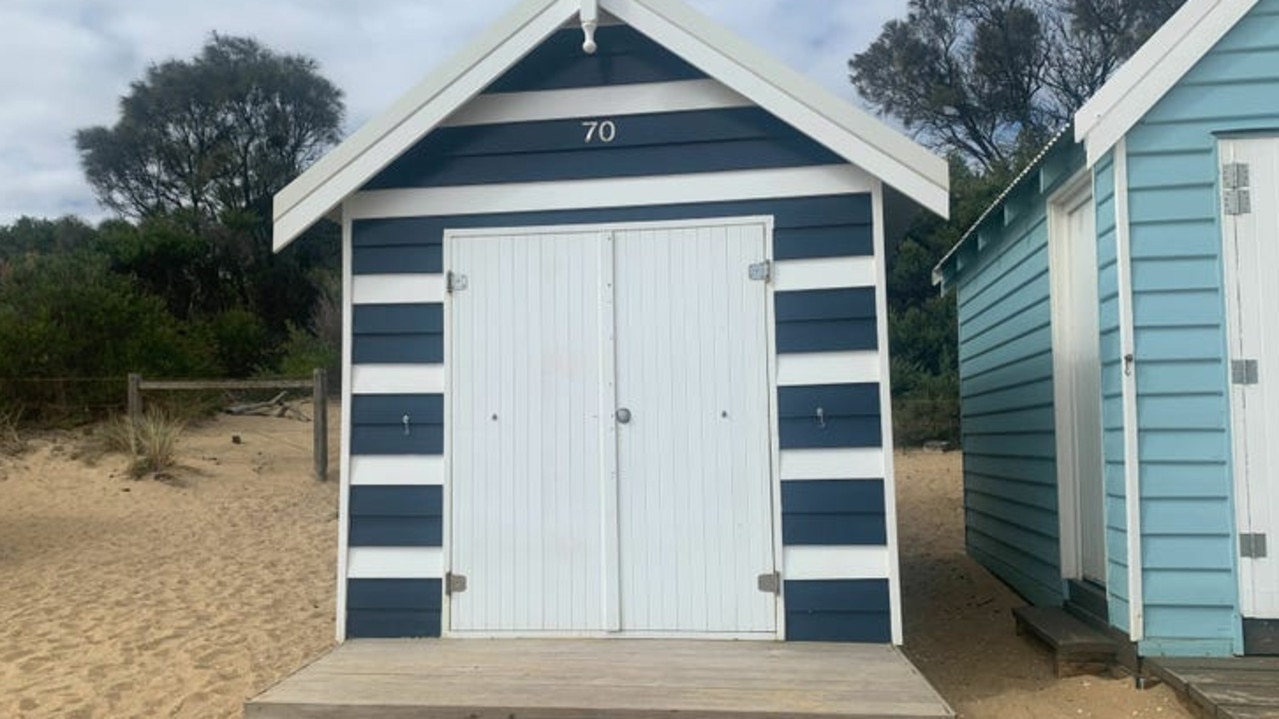Anzac Day 2023: Victorians turn out in force for services
Tens of thousands of Victorians have taken part in Anzac Day services to pay tribute to those who have served and sacrificed.
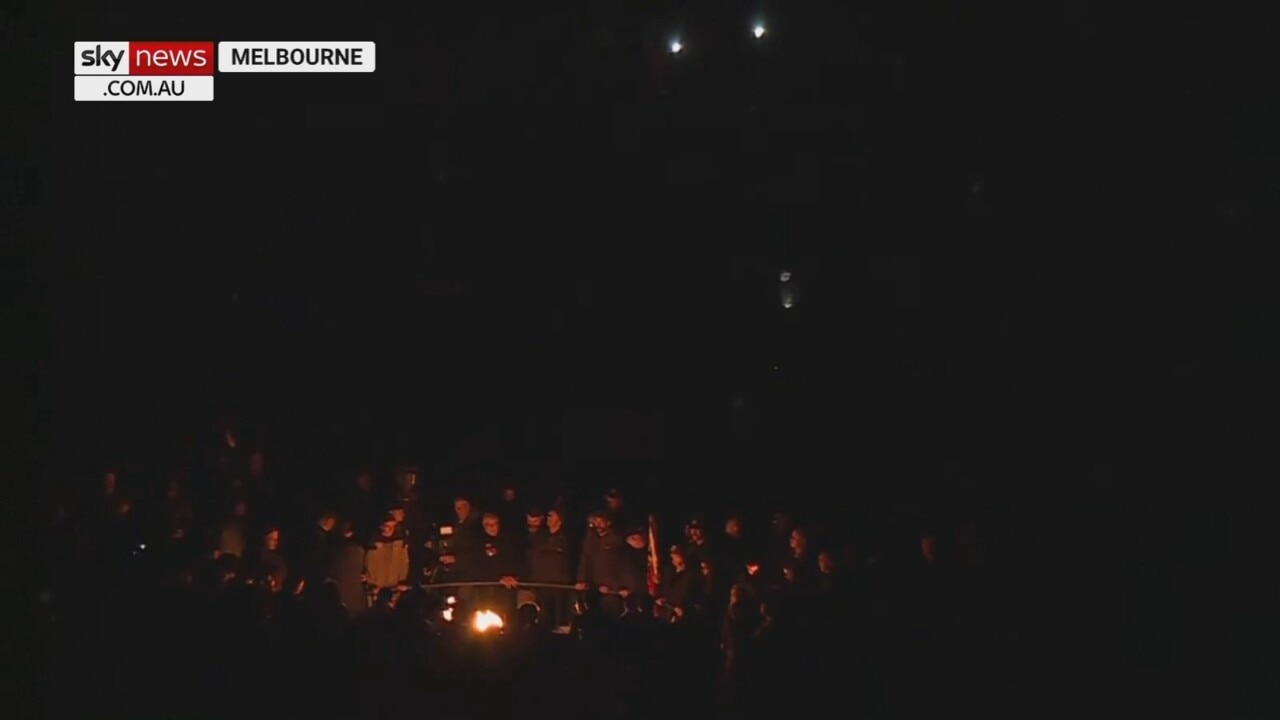
News
Don't miss out on the headlines from News. Followed categories will be added to My News.
Light up the footpath, determined to show that though they grow old, they can still do it.
They come in thousands from sleepy country districts far across the state, from sleek apartments across St Kilda Rd and from the endless suburbs in between, from South Yarra to South Morang, Werribee to Warragul.
They come because Anzac Day is the one day of the year when the few big things that unite us are stronger than many other things that don’t.
They come for the comfort of the familiar: the Last Post, the Ode, speakers who remind us who we are and who we were.
They come to remember ordinary Australians who volunteered to do extraordinary things.
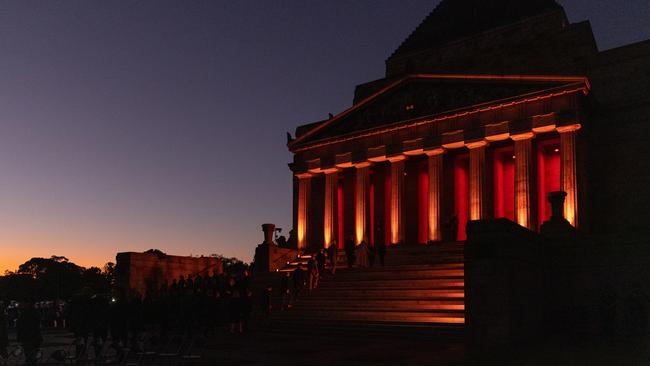
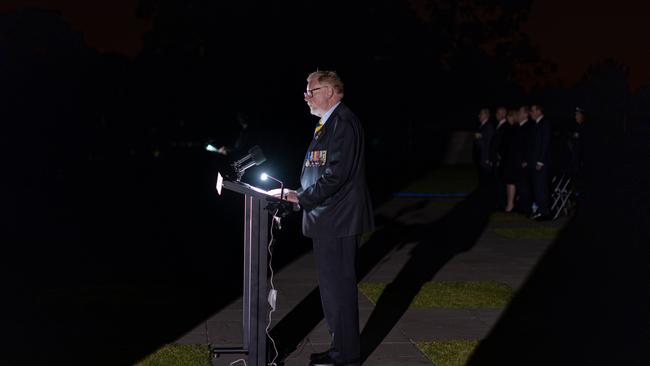
They come to honour the debt owed to generations before ours — especially to the thousands buried in foreign fields, from Flanders to Gallipoli, from Tobruk to the Kokoda Track.
More than an hour before dawn, the trickle of humanity turns into a stream, like a river after rain. They pour across Princes Bridge from the city, from car parks and side streets, from trains and crowded trams.
As minutes tick down, the crowd thickens as it converges on the great monument that was finally opened in 1934, 20 years after the beginning of the war that was supposed to end all wars — but didn’t.
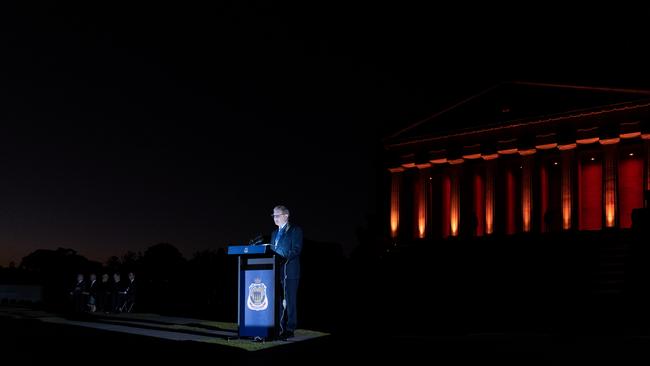
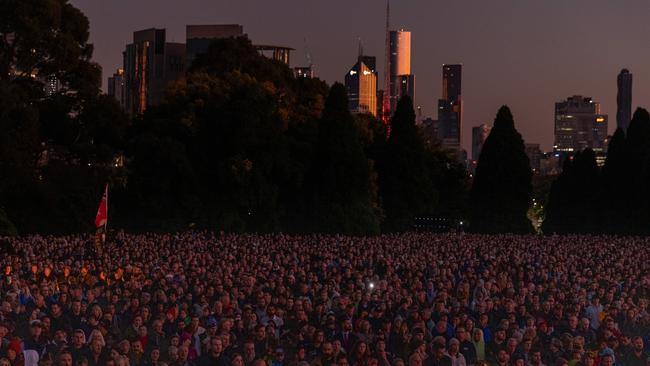
The Shrine looms in the night sky: part European castle, part Egyptian pyramid with a bit of Parthenon at the front, its classical Greek columns lit red and orange, the colours of blood and fire.
This century, so many of us come that big screens are set up so everyone can watch what’s happening on the dais, where officialdom does what must be done every April 25.
The crowd is big but mostly silent. It’s hard to know what schoolkids make of it but many of their elders have relatives who went to war and know first hand its effects on families, generation by generation.
Here’s a little bull terrier of a man with a big bull terrier of a dog, happily rubbing its head on strangers’ legs.
There’s a middle-aged couple sharing a soft kiss before she studies her phone.
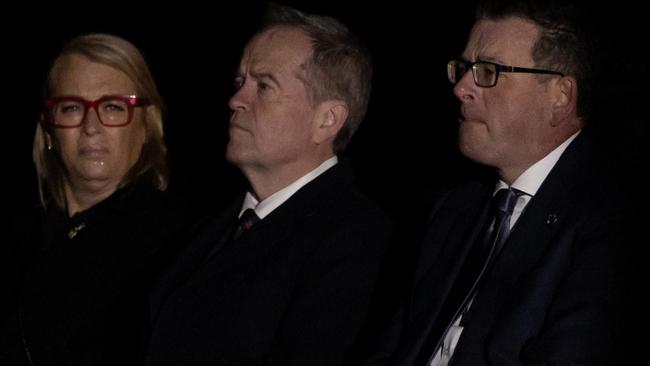
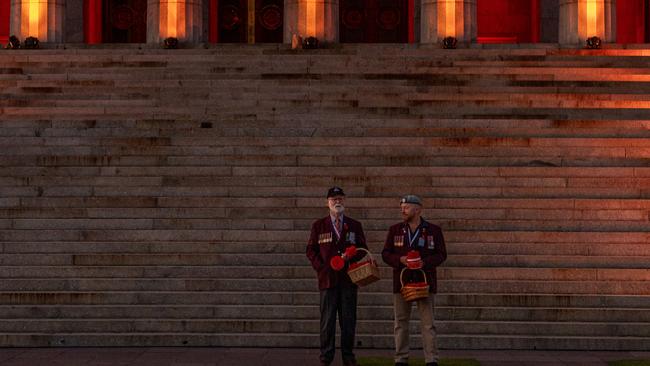
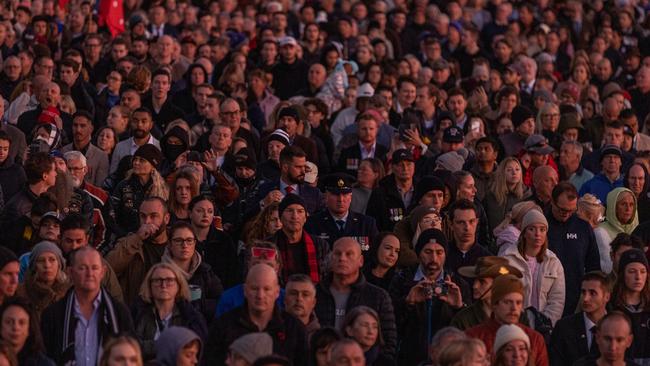

Here’s an RSL badge seller, shining weak torchlight over a tray of offerings, discreetly hawking tokens to the faithful.
There’s a little kid from the bush, excitedly pointing to a packed tram and saying “Dad, look at the train!”
Here’s a middle-aged football fan wearing a footy scarf and a dead man’s badges, studying the endless reel of wartime images on the screens: young Diggers playing cards, young Diggers eating from tin dixies, young Diggers festooned with ammunition belts, young Diggers in shorts and dog tags.
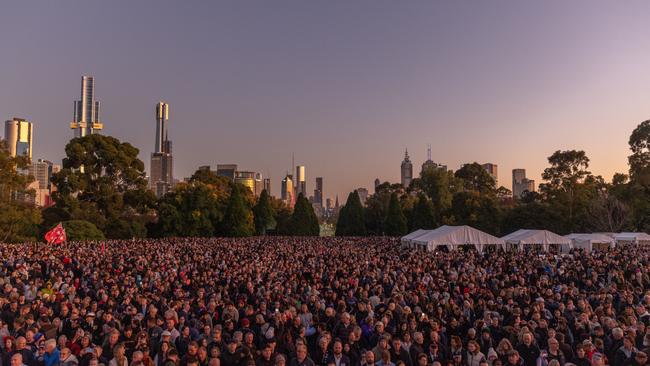
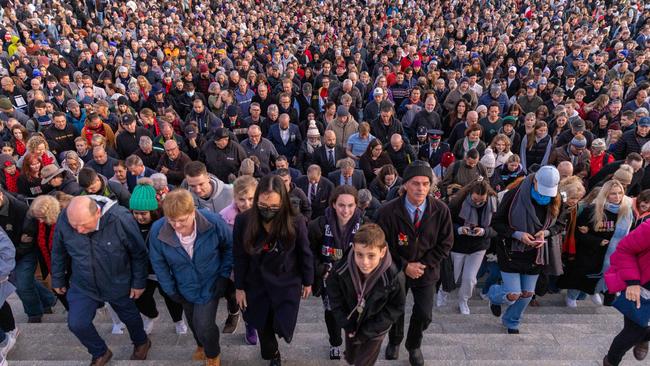
“Kids. They were only kids,” he exclaims. Something that has been said countless times, of course, for the very good reason that it’s true. The dead are many and most of them were young.
When the service’s new MC Justin Smith opens proceedings, he points out it is 70 years since Australian forces left Korea after the “forgotten war” in which 339 Australians were killed and 43 went missing in action.
He tells the story of Horace “Slim” Madden, who defied his Chinese captors and gave food to his fellow prisoners until he died, unbowed, in late 1951. For his courage behind barbed wire, “Slim” was posthumously awarded the George Cross, equivalent of a Victoria Cross.
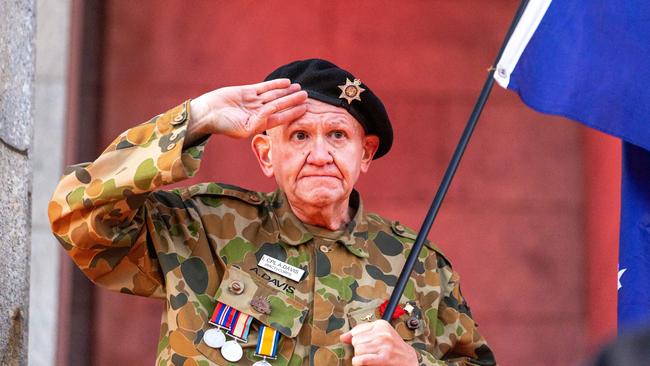
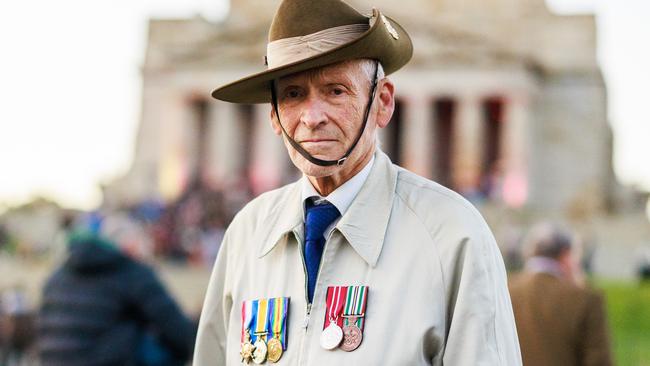
Smith retells the story of Capt. Reg Saunders, Australia’s first indigenous officer, who fought in World War II, drove a tram in Melbourne for a while then signed on for Korea. There, Saunders and his men joined Americans and Kiwis in the battle of Kapyong, where five days of bloody fighting saved Seoul.
When Victoria’s Lieutenant-Governor, Prof. James Angus, takes the microphone, he calls the Shrine “Melbourne’s most sacred place.”
He stresses that the 17,000 Australians who served in Korea are not forgotten, their ordeal no longer dismissed.
Time was when Korea veterans were not welcome in RSL clubs run by world war veterans. But times change.
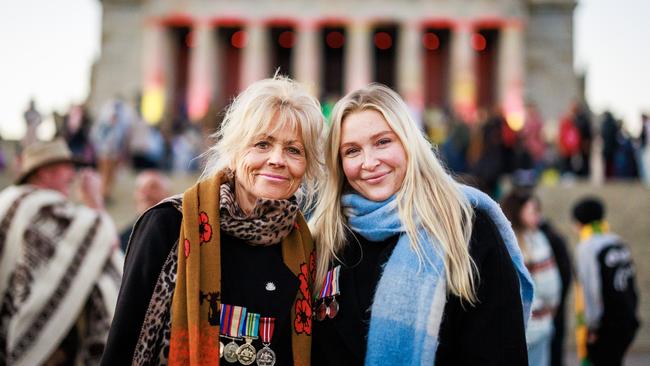
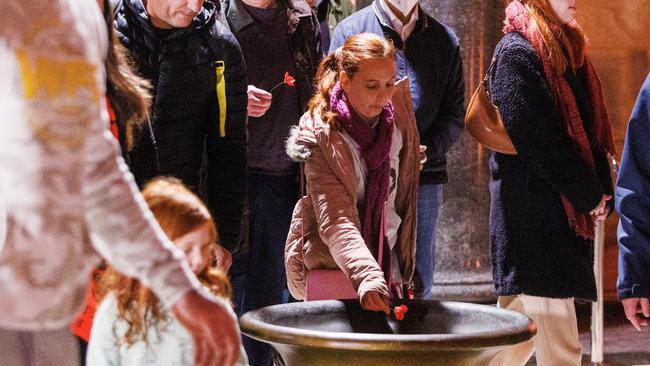
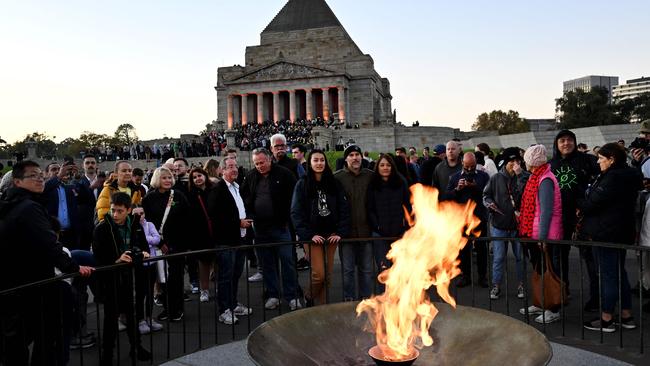
Angus read what he called the “terse, sawn-off sentences” of unit war diaries to convey what it was like to mark Anzac Day on a Korean battlefield in 1952.
That day, amazingly, Turkish troops joined their former foes in the Anzac ceremony. Sons of both Turks and ANZAC troops who had slaughtered each other at Gallipoli were now comrades against a common enemy.
By the time the Navy pipe band strikes up to mark the end of the ceremony, the huge crowd moves off to get ready for the march.
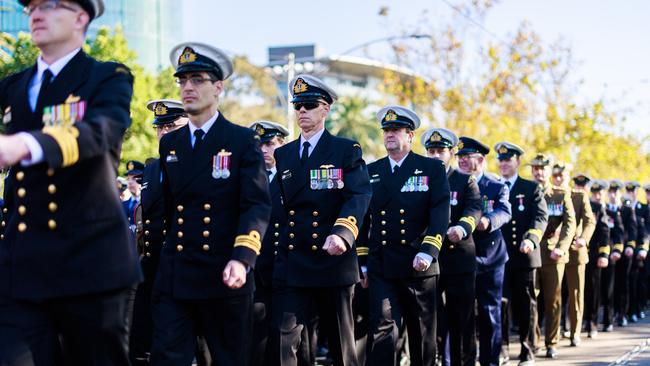
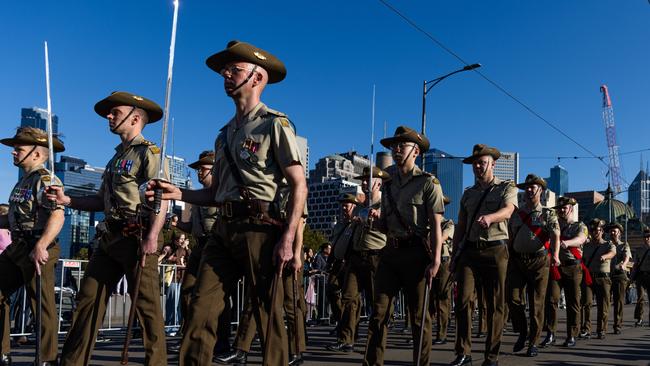
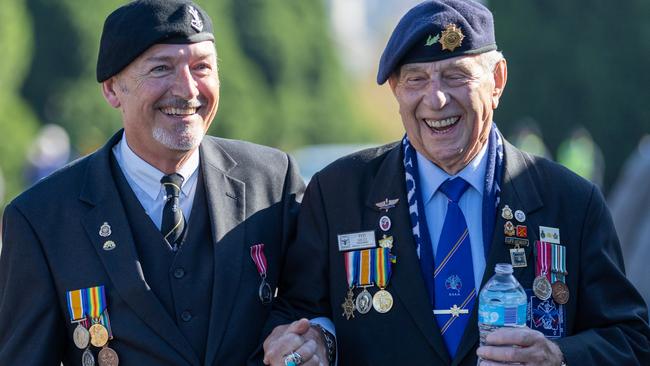
Many of them are wearing football scarves, ready for another ritual, the one at the MCG. What used to be a sad and sombre day of remembrance for the fallen, a sort of annual funeral, has gradually turned into something else.
Just under 100,000 can jam into the great sporting stadium. Which is slightly less than the number of Australian war dead.
Lest we forget.
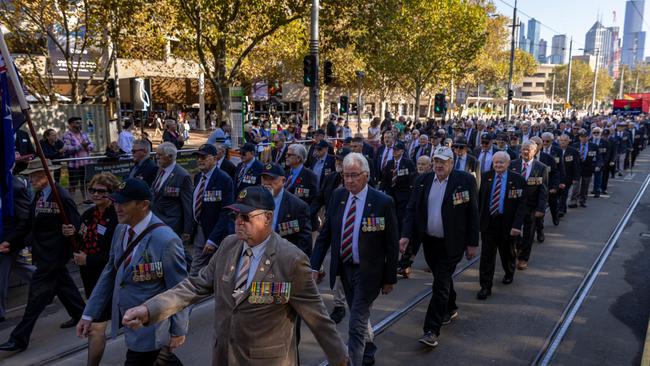
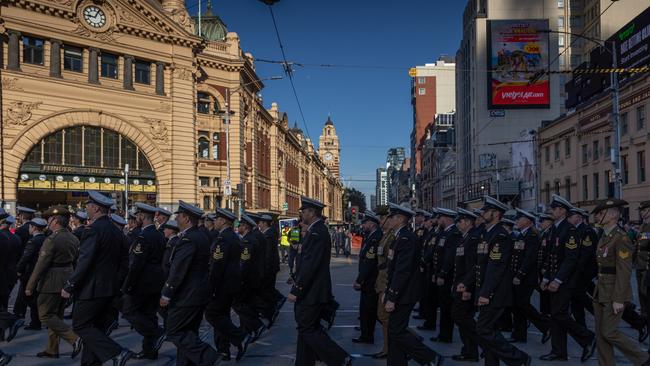
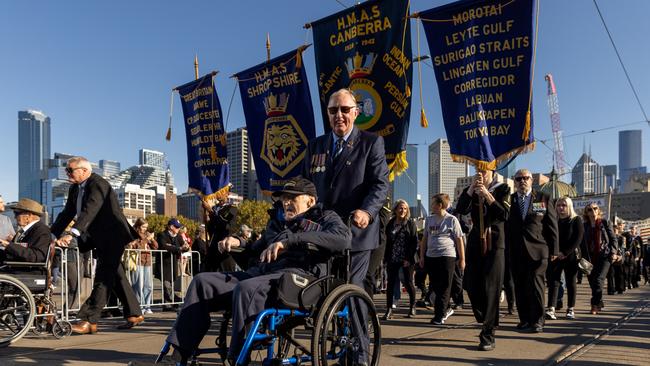
Key timings for Anzac Day 2023
5.30am: Dawn Service commences
7am: Shrine of Remembrance opens
9am: Anzac Day March commences
A Commemorative Service will be held at the conclusion of the March
Is Anzac Day a public holiday?
Yes, Anzac Day 2023 is a public holiday in Victoria.
What public transport operates on Anzac Day?
Free buses and extra train and tram services have been confirmed for Tuesday’s Anzac Day commemorations and football matches.
Free shuttle buses will run along 12 routes, including many RSLs, to arrive at the Shrine before the 6am ceremony.
Buses will start from Chadstone, Croydon, Dandenong, Doncaster, Essendon, Greensborough, Mitcham, Mordialloc, Templestowe, Thomastown, Wantirna and Williamstown.
Each metropolitan rail line will also operate an early service, and extra trams will run along St Kilda Rd so people can arrive at the Shrine on time.
An extra 36 train services and 23 trams services will also operate for the Anzac Day AFL blockbuster between Collingwood and Essendon at the MCG, as well as the NRL evening clash between the Storm and the Warriors at AAMI Park.
What shops are open?
Under Victorian law, most shops can’t open their doors until 1pm — and that includes the big three supermarkets Coles, Woolworths and ALDI.
Bottle shops such as Dan Murphys, Bunnings, Kmart and Big W will also open at 1pm.
Some stores may operate with reduced evening trading hours.
How can I donate to the AnzacAppeal?
Donate to the AnzacAppeal here and support Australian veterans and their families in need.



